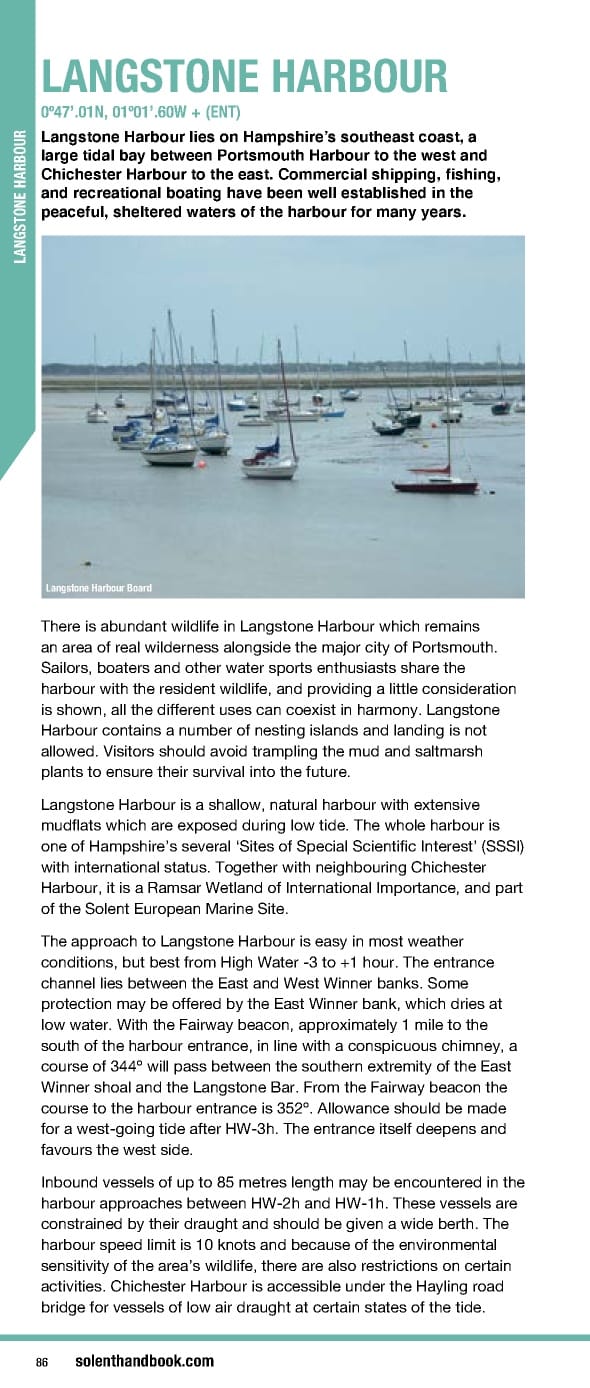LANGSTONE HARBOUR 0º47’.01N, 01º01’.60W + (ENT) Langstone Harbour lies on Hampshire’s southeast coast, a large tidal bay between Portsmouth Harbour to the west and Chichester Harbour to the east. Commercial shipping, fishing, and recreational boating have been well established in the peaceful, sheltered waters of the harbour for many years. LANGSTONE HARBOUR Langstone Harbour Board There is abundant wildlife in Langstone Harbour which remains an area of real wilderness alongside the major city of Portsmouth. Sailors, boaters and other water sports enthusiasts share the harbour with the resident wildlife, and providing a little consideration is shown, all the different uses can coexist in harmony. Langstone Harbour contains a number of nesting islands and landing is not allowed. Visitors should avoid trampling the mud and saltmarsh plants to ensure their survival into the future. Langstone Harbour is a shallow, natural harbour with extensive mudflats which are exposed during low tide. The whole harbour is one of Hampshire’s several ‘Sites of Special Scientific Interest’ (SSSI) with international status. Together with neighbouring Chichester Harbour, it is a Ramsar Wetland of International Importance, and part of the Solent European Marine Site. The approach to Langstone Harbour is easy in most weather conditions, but best from High Water -3 to +1 hour. The entrance channel lies between the East and West Winner banks. Some protection may be offered by the East Winner bank, which dries at low water. With the Fairway beacon, approximately 1 mile to the south of the harbour entrance, in line with a conspicuous chimney, a course of 344º will pass between the southern extremity of the East Winner shoal and the Langstone Bar. From the Fairway beacon the course to the harbour entrance is 352º. Allowance should be made for a west-going tide after HW-3h. The entrance itself deepens and favours the west side. Inbound vessels of up to 85 metres length may be encountered in the harbour approaches between HW-2h and HW-1h. These vessels are constrained by their draught and should be given a wide berth. The harbour speed limit is 10 knots and because of the environmental sensitivity of the area’s wildlife, there are also restrictions on certain activities. Chichester Harbour is accessible under the Hayling road bridge for vessels of low air draught at certain states of the tide. 86 solenthandbook.com
 Solent Handbook & Directory April 2023- March 2024 Page 85 Page 87
Solent Handbook & Directory April 2023- March 2024 Page 85 Page 87